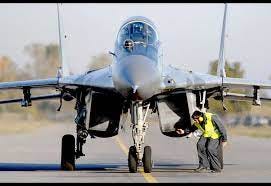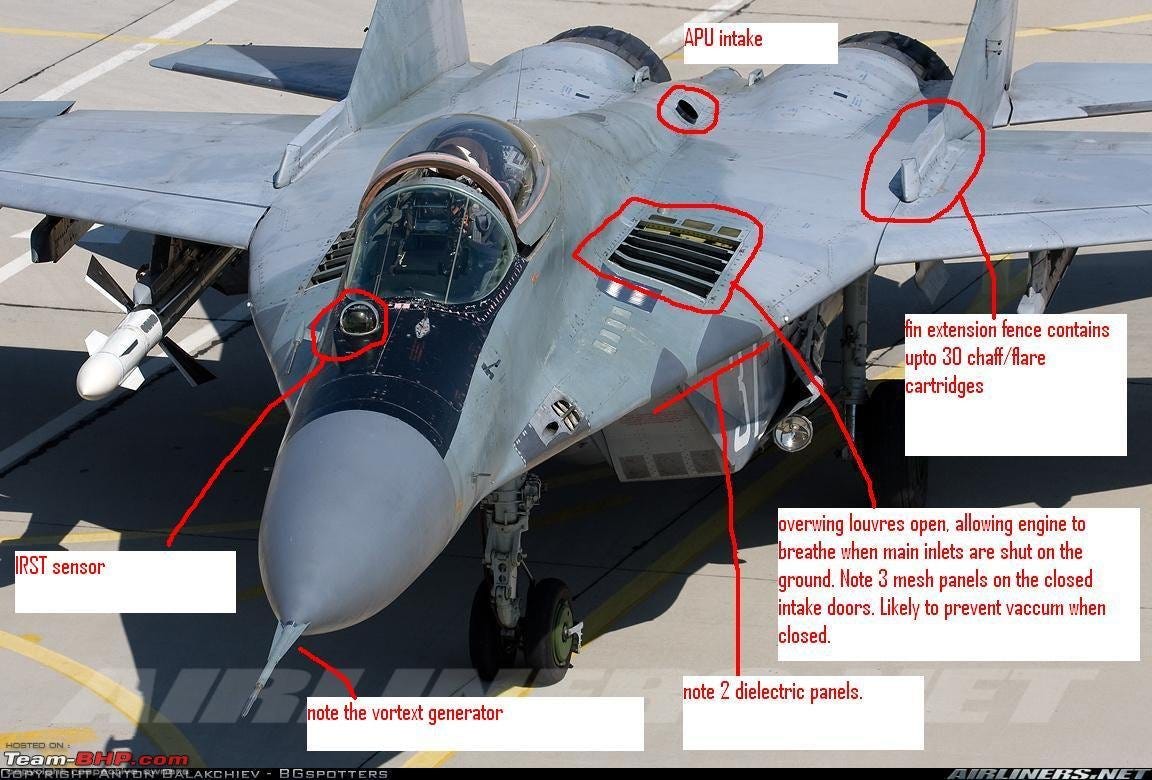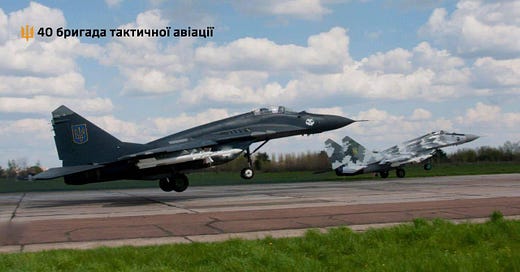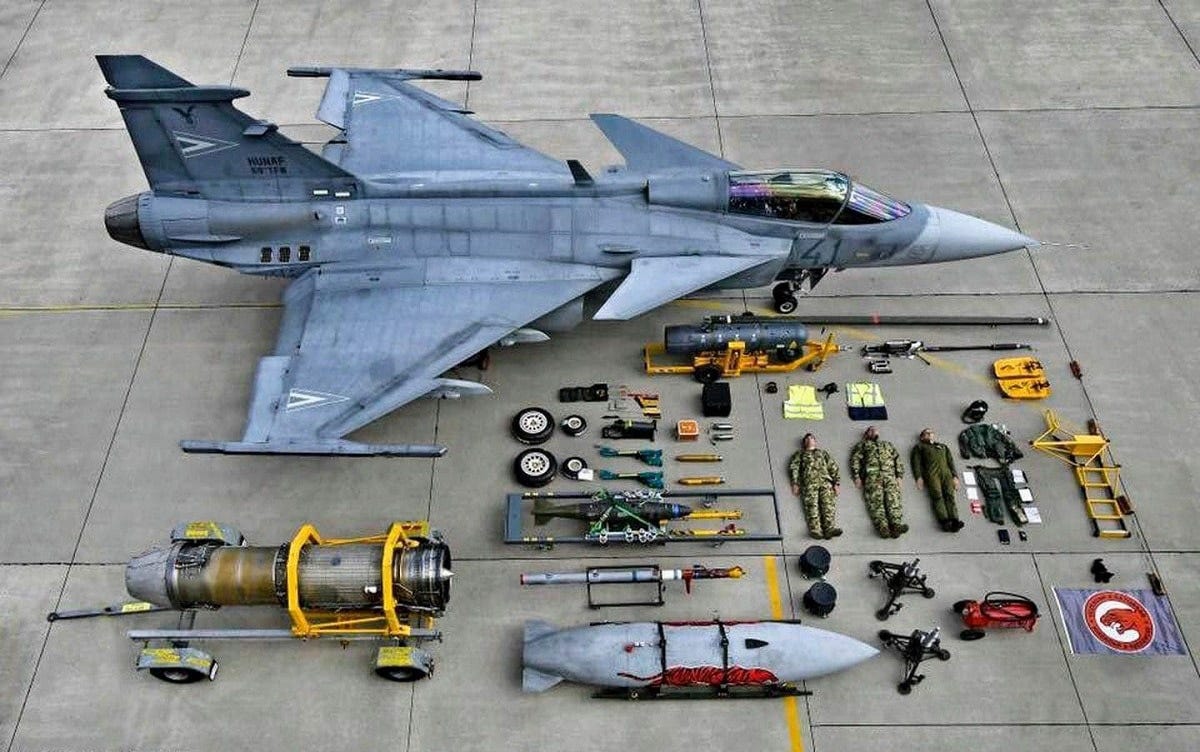Ukraine War, 29 April 2023: Why is NATO not delivering Western-designed Fighter Jets to Ukraine?
I’m continuously - for days, weeks, and months already - ‘bombarded’ with questions like, ‘why isn’t Ukraine getting F-16s’. Have tried to explain this multiple times, but it seems that wasn’t enough. Thus, let me try it once again.
1.) It’s not economical.
Modern combat aircraft are extremely expensive. Depending on their equipment, even overhauled F-16s go at US$ 30-40 million ‘apiece’. Types like EF-2000, Rafale, or JAS.39 Gripen go at anything between €70 and 100 million – for every single aircraft. One hour of their flying time costs some €/US$40,000-70,000. The ammunition for them is expensive, too: a single AGM-88E, for example, goes at something like US$ 6 million. A single stand-off high precision weapon like Scalp-EG or Storm Shadow goes at €/US$1.7 million. Even something as ‘simple’ as one Mk.82 bomb calibre 250kg costs about US$30,000. Add the JDAM-kit to it and the price tag is at more than 50,000….
In comparison, a single self-propelled artillery piece in the class of the M109 – of which Ukraine is getting a lot from Italy, in recent times, just for example – costs about US$10,000, perhaps 40,000 (if in poor condition), to overhaul/reactivate and bring to Ukraine. The cost of a single M777 towed howitzer is significantly higher, no doubt: they must be entirely newly manufactured – but: it’s still somewhere at around US$700,000, perhaps 1 million. Less than a single guided missile that would be fired from a jet…
Moreover, even if the USA would donate, say, 24, 36, 48 F-16s to Ukraine: somebody would still have to pay for training of their pilots and ground crews (up to US$1 million per year of training), for their equipment (from tyres and pylons for weapons, to spares, and fuel), for construction of suitable ground installations in Ukraine, and – gauging by experiences from deliveries of many other Western weapons to Ukraine over the last 14-15 months – for construction of suitable maintenance facilities in countries that are NATO-members and neighbouring Ukraine.
Therefore, and even if I’ve got no idea how much would the construction of the necessary infrastructure for, say, second-hand F-16s donated by the USA in Ukraine cost, it’s on hand that the total bills for it would – easily – surpass the worth of all the Western-made artillery pieces delivered to Ukraine over the last 14 months.
Sorry, alone for this reasons: this is not going to happen.
2.) It is not combat-efficient.
Just like Soviet aircraft operated by the Ukraine Air Force and Air Defence Force (PSU) – i.e. types like MiG-29, Su-24, Su-25, and Su-27 – were designed to be operated as a part of a very specific (Soviet) air warfare system (and like they and their predecessors, are regularly losing air wars whenever not supported by a suitable air warfare system), so also Western jets are made to be operated as a part of a very specific (US/NATO) air warfare system. In the case of F-16s, this means that they were built in expectation to fight while supported by:
- multiple civilian- and military intelligence agencies (including those operating reconnaissance satellites, stealth UAVs, etc.);
- Boeing E-3 Sentry AWACS aircraft;
- Boeing RC-135 communications/electronic/signals intelligence (COMINT/ELINT/SIGINT) gathering aircraft;
- Boeing KC-135 or McDonnell Douglas KC-10, or Airbus A.330MRTT or similar tanker aircraft;
- Boeing F-15C/D (and similar) air superiority aircraft, and – in more recent times – also
- Boeing EF-18G Growler electronic warfare aircraft.
Means: Western fighter jets in the F-16-class are not meant to fight alone, entirely on their own. But, as a part of an air warfare system providing their pilots with the necessary situational awareness. The PSU has an integrated air defence system, no doubt about this: but, right now, this system is not capable of providing its potential ‘F-16-pilots’ with the situational awareness necessary for these to deploy their F-16s in effective fashion.
This mans: whether getting F-16s or EF-2000s, or Rafales, or Gripens, Ukrainians would lose them just like they’re losing their MiG-29s, and Su-25s, and other types. The only difference would be the price tag per loss. There would be no improvement, because single aircraft – or pairs of aircraft, or even 24, 36, 48 or whatever aircraft – can’t change much in modern-day air warfare. Not without help from the air warfare system for which they were designed to operate.
3.) It’s not combat-effective (yes, again: for emphasis)
Per single sortie, a jet in the class of F-16 can deliver a maximum of around 2,000kg of ordnance on its target (sure, some can carry more, but then are ‘flying bricks’, no combat aircraft). A single jet in that class can fly some three, perhaps four sorties a day. If it doesn’t get shot down by enemy air defences, or develops a technical problem. That’s a maximum of 6,000kg, perhaps 8,000kg of ordnance per day, with a total price tag (operational cost + ordnance) of at least 300,000. For one day of operations.
For comparison: depending on the type, a howitzer calibre 155m has an average rate of fire of 2-5 shells per minute. An average 155mm shell weights some 40kg. That means: to deliver 8,000kg of ordnance upon the enemy, a single howitzer needs some 180 shells. Lets be conservative and say, it’s firing at a rate of 2 shells per minute. That means: it’s going to take just 90 minutes to deliver the same volume or ordnance upon the enemy, with the same or at least similar precision yet far lower cost, and less danger for its crew, as an F-16 can do – though at a far higher cost, and higher danger for its crew, and only in 24 hours.
4.) It’s not economical (yes, again: for even more emphasis)
Having all the figures listed above in mind, now think how many Ukrainian Army (ZSU) units can be equipped with how many ‘guns’ – at the price it would take to equip just one squadron of the PSU with F-16-class of aircraft?
How many more ordnance can they deliver – regardless the weather, regardless the time of the day, regardless the enemy air defences etc. – than any kind of a squadron of combat aircraft in the class of the F-16?
Hand on heart (and mind: I’m a big ‘aviation/air power fan’), it’s simply not making sense to ‘re-equip’ the PSU with Western-made fighter jets. In best case, they wouldn’t get shot down by the Russian air defences, but end like that dozen of Panzerhaubitze 2000s: all undergoing maintenance and repairs after a few months of intensive operations…
….and that’s just the start. Atop of these factors, add such like:
- F-16 is not made to be operated under ‘primitive’ conditions, de-facto in style of ‘aerial guerrilla war’, under which the PSU is currently operating (from air bases that are frequently targeted by Russian missiles, from dirty runways etc.). They are made to be operated from nice, clean, big, well-maintained air bases, about 700-1200km away from their potential targets: that’s actually outside their range, but hey, that’s why the USAF has so many tanker aircraft. Ukraine simply has no such bases, and even less so any kind of tanker aircraft.
- Why is that with big clean air bases as important? Because, while a nice-looking piece of machinery, if operated under primitive conditions, the F-16 has a ‘FOD-problem’. FOD is short for ‘foreign object damage’. Means: as soon as its engine is on, that big intake under its fuselage tends to suck in everything some 10 metres ahead and below the aircraft. This means: there is a persistent danger its engine sucking in something that’s going to damage it. MiG-29s have a similar problem, but at least they have ‘built-in FOD-protection’: they have big plates which are lowered into- and thus blocking the intake once the engines are powered up while the aircraft is on the ground and rolling for take-off or landing.
(Before anybody asks: nope, this is not making MiG-29 ‘the’ jet to go for Ukraine. I’m just explaining one of F-16’s weakest spots.)


- From that aspect, a type like (Swedish-made) JAS.39 Gripen would be a far better solution: it’s got no similar FOD problem. However, here are not enough of them around to supply, say, 24, 36, 58 to Ukraine, and even if Stockholm would want to do so: SAAB simply can’t ‘print’ them. Indeed, even if Stockholm and Kyiv would agree their delivery ‘tomorrow at 09.00hrs in the morning’, it would take several years for the jets to actually be manufactured, their crews trained, the necessary support infrastructure in Ukraine developed, and thus JAS.39s actually to become operational in Ukraine, and then the entire story with millions in costs listed above would start….
- …and let me not even try starting with supply of ammunition. Heck: after 14 months of this war, the USA and entire NATO are run by such a bunch of corrupt incompetents that they still have a major problem just with supplying enough artillery ammunition to Ukraine - but you think they would have it easier to supply much more expensive aircraft ammunition, of which even less stocks are available….?
…That’s as likely to ‘work’ as that Sun goes up in the West, tomorrow in the morning…
Sorry, under all these conditions: no wonder everybody in NATO says, ‘no fighter jets for Ukraine’.
It’s far more economic, and vastly more effective, to stuff Ukraine full with artillery – all provided one is providing it with enough artillery shells too. Otherwise, even artillery pieces are useless.






Дуже дорого. А українці дешеві. І земля наша дешева, її можна вибухівкою нашпигувати на 10 метрів вглиб. А найбільш дешево було наїбати українців і забрати ядерну зброю (скільки вона коштувала?) в обмін на голий цинізм.
Although the points you outlined make a lot of sense, how does it solve the problem you outlined in the previous reports - specifically, the lack of air defence for Ukraine? Because the primary reason Ukraine wants the F-16 is not to use them as a fighter-bomber, but to boost the air defence system.
Especially in spite of the expected counter-offense, Ukraine needs to protect the advancing ground troops. In the meanwhile, as mentioned in your reports for the last 1-2 months, russian air force is getting bolder, because the air defence capacities Ukraine has has been exhausted, and can't cover the entire frontline. Sure, sending more air defence systems could help - but they're not quite cheap and easy to use as well, they often use the same expensive missiles as the fighter jets, and the stocks of these are not dramatically larger than the stocks of F-16 or similar-class jets. And unless the West wants to see the whole packs of tanks, APCs and all the other equipment they're sending being bombed to a ground in a failed counter-offensive, this problem needs to be solved somehow.
So wouldn't it be better to proceed with F-16 then? Even if not used to a 100% of their strengths, they will be much more capable than MiG-29.